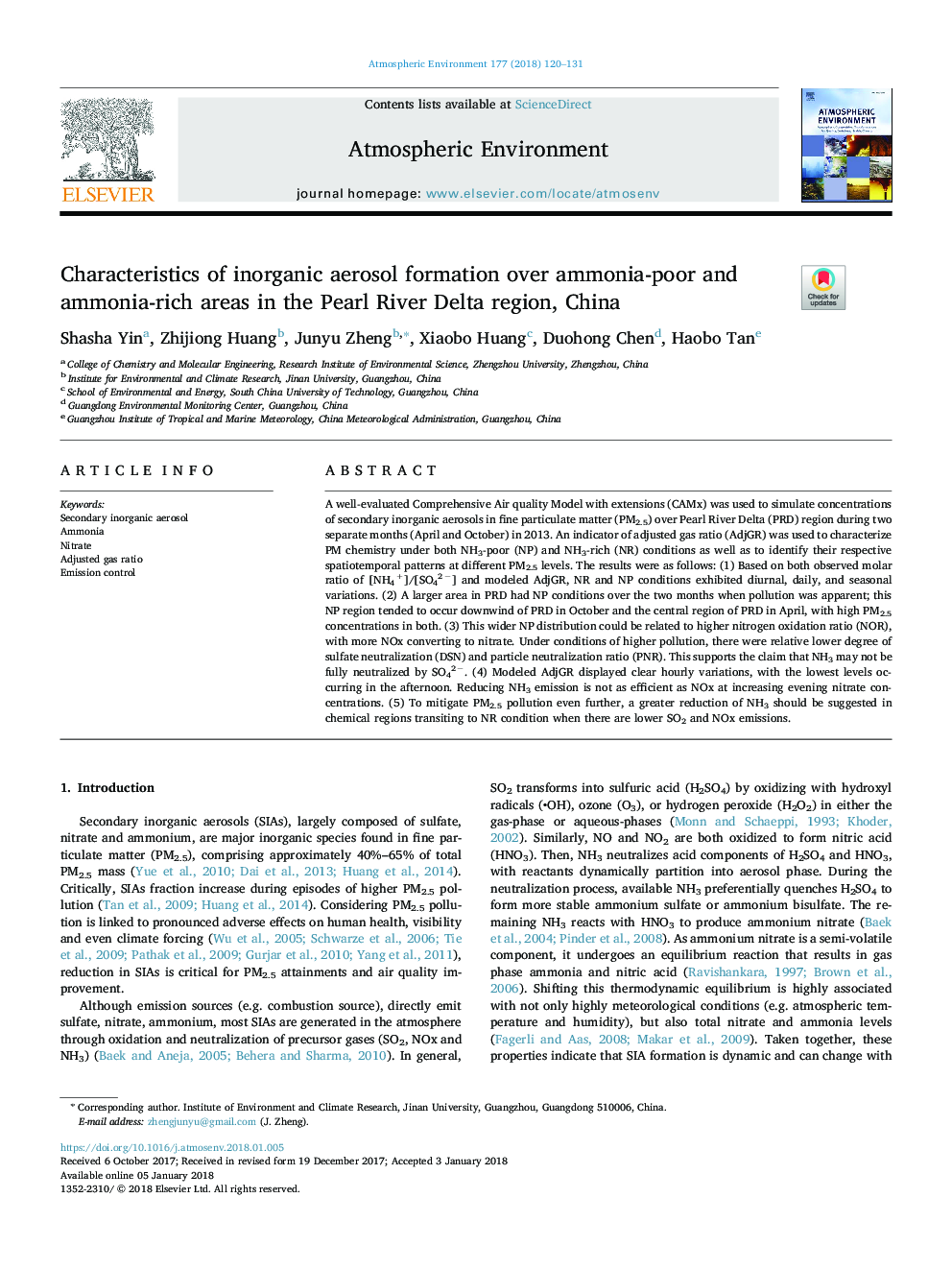| Article ID | Journal | Published Year | Pages | File Type |
|---|---|---|---|---|
| 8864080 | Atmospheric Environment | 2018 | 12 Pages |
Abstract
A well-evaluated Comprehensive Air quality Model with extensions (CAMx) was used to simulate concentrations of secondary inorganic aerosols in fine particulate matter (PM2.5) over Pearl River Delta (PRD) region during two separate months (April and October) in 2013. An indicator of adjusted gas ratio (AdjGR) was used to characterize PM chemistry under both NH3-poor (NP) and NH3-rich (NR) conditions as well as to identify their respective spatiotemporal patterns at different PM2.5 levels. The results were as follows: (1) Based on both observed molar ratio of [NH4+]/[SO42â] and modeled AdjGR, NR and NP conditions exhibited diurnal, daily, and seasonal variations. (2) A larger area in PRD had NP conditions over the two months when pollution was apparent; this NP region tended to occur downwind of PRD in October and the central region of PRD in April, with high PM2.5 concentrations in both. (3) This wider NP distribution could be related to higher nitrogen oxidation ratio (NOR), with more NOx converting to nitrate. Under conditions of higher pollution, there were relative lower degree of sulfate neutralization (DSN) and particle neutralization ratio (PNR). This supports the claim that NH3 may not be fully neutralized by SO42â. (4) Modeled AdjGR displayed clear hourly variations, with the lowest levels occurring in the afternoon. Reducing NH3 emission is not as efficient as NOx at increasing evening nitrate concentrations. (5) To mitigate PM2.5 pollution even further, a greater reduction of NH3 should be suggested in chemical regions transiting to NR condition when there are lower SO2 and NOx emissions.
Related Topics
Physical Sciences and Engineering
Earth and Planetary Sciences
Atmospheric Science
Authors
Shasha Yin, Zhijiong Huang, Junyu Zheng, Xiaobo Huang, Duohong Chen, Haobo Tan,
